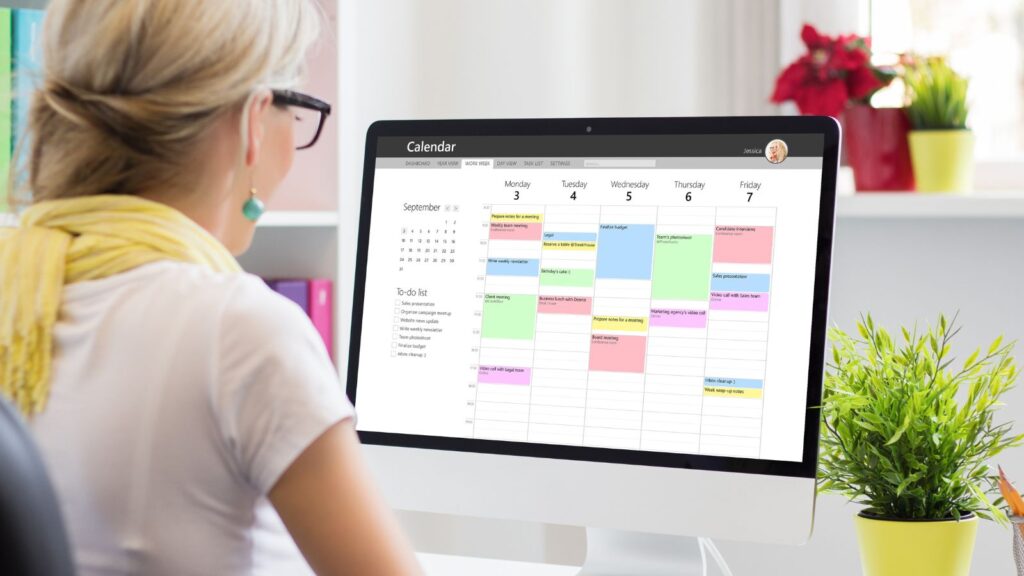You’re aware of the crucial role productivity plays in a team’s success, aren’t you? Imagine an environment where processes are streamlined, collaboration is effortless, and monitoring is real-time. This is where employee management app comes in. Apps like this provide a centralized platform for effective communication, task management, and performance tracking. Now, consider the potential value of time tracking, detailed reporting, and insightful analytics. Intriguing, isn’t it? But how exactly can these features help your team achieve its goals and what does the process of integrating such technology look like? Let’s explore together.
Key Takeaways
- Employee management apps can streamline team processes, improving efficiency and productivity.
- Core features of these apps include task management, collaboration tools, and performance tracking capabilities.
- The right app should be chosen based on specific needs, ease of use, and seamless integration with existing systems.
- Benefits of using these apps include enhanced communication, easy performance measurement, and improved work-life balance.
- Future trends in these apps include AI integration, personalization, mobile-first design, and enhanced data security.
Understanding Employee Management Apps
To truly leverage the benefits of employee management apps, you must first understand what they are and how they function. Essentially, an employee management app is a mobile or desktop application designed to streamline the process of managing your team. It’s a tool to help you track, analyze, and improve your employees’ performance and productivity.
These apps offer a centralized platform where you can monitor your employees’ activities, tasks, and progress in real-time. They’re not just about keeping tabs on your team, though. They’re also about fostering collaboration, enhancing communication, and promoting transparency within your organization.
Core Features of Productivity Apps
Let’s dive into the core features of productivity apps that can revolutionize how your team works. These apps typically include task management tools, which allow you to assign tasks, set deadlines, and track progress in real-time. This feature brings transparency to your team’s workflow and ensures everyone’s on the same page.
Collaboration is another crucial aspect. Most apps include chat features, document sharing, and collaborative editing. So, whether your team’s in the same office or working remotely, you can all work together effectively.
Then there’s time tracking. With this, you can monitor how much time your team spends on projects, helping identify areas where efficiency could be improved.
Calendar management tools are also essential. They help schedule meetings, set reminders, and plan projects, ensuring nothing slips through the cracks.
Lastly, most apps come with reporting and analytics features. These provide insights into team productivity and performance, helping you make data-driven decisions.
In a nutshell, productivity apps equip you with tools to manage tasks, foster collaboration, track time, manage calendars, and analyze performance data. These features not only streamline workflow but also enhance team productivity and efficiency.
How to Choose the Right App
Choosing the right productivity app should hinge on your team’s needs and workstyle. You’ll need to consider its functionality, ease of use, and compatibility with your existing systems.
Start by identifying what tasks or projects you’re looking to streamline. Are you after better communication, project management, or time tracking? Once you’ve pinpointed the areas of inefficiency, you can then select an app that best addresses these issues.
Ease of use is another crucial factor. It’s no good having a feature-rich app if your team finds it difficult to navigate. The ideal app should have an intuitive interface and offer adequate support and training.
As for compatibility, ensure the app integrates seamlessly with the systems you already have in place. It shouldn’t disrupt your workflow but instead enhance it. Look for apps that can synchronize with your current software.

Lastly, consider the cost. While you shouldn’t compromise on functionality, don’t blow your budget. There’s a wide range of apps available, some free and others subscription-based. Do your research to find the one that provides the best value for your money.
Benefits of Using Management Apps
When you incorporate management apps into your work routine, you’ll quickly realize their plethora of benefits, starting with improved efficiency and productivity. These apps streamline tasks and automate mundane processes, freeing up your time for more important duties. You’ll see your to-do list shrink and your productivity soar.
Another advantage of these apps is their ability to improve communication within your team. No more endless email chains or missed messages; everything is in one place, accessible to everyone. You’ll notice a significant improvement in the coordination and collaboration among your team members.
You’ll also find that these apps make tracking and measuring performance a breeze. They provide real-time data and insights, allowing you to make informed decisions and identify areas for improvement. It’s like having a personal business analyst on your team.
Lastly, these apps improve flexibility and work-life balance. They allow employees to work from anywhere, anytime, which can lead to increased satisfaction and reduced turnover. So, not only do management apps boost your productivity, but they also contribute to a happier and more committed workforce.
In a nutshell, the benefits of using management apps are too significant to ignore. So why wait? Start reaping these rewards today.
Case Study: App Success Stories
To illustrate the effectiveness of management apps, consider the success stories of companies that have integrated these tools into their operations.
For instance, a well-known multinational company, after using an employee management app, reported a 20% increase in productivity. The app allowed managers to track tasks in real time, leading to quicker adjustments and reduced downtime.
Another example is a small tech startup that used a performance tracking app. Onboarding, task assignment, and performance reviews were all streamlined, resulting in less administrative time and more focus on core business activities. The company reported a 30% reduction in administrative time and a significant increase in overall team performance.
Moreover, a large retail chain implemented a scheduling app that minimized scheduling conflicts and labor law breaches. The app’s ability to forecast staffing needs led to a 15% decrease in labor costs.
These success stories clearly demonstrate how management apps can transform your business operations. They not only bring efficiency but also enhance productivity and save costs.
Overcoming Implementation Challenges
While these success stories paint an optimistic picture, it’s worth noting that implementing these apps also comes with its own set of challenges that you’ll need to overcome. For starters, you may face resistance from your team, especially if they’re used to traditional methods. It’s crucial to secure their buy-in early on. Make sure to clearly communicate the benefits of these apps and how they make work easier.
Secondly, there’s the issue of training. Not everyone on your team might be tech-savvy. It’s essential to provide adequate training so everyone can utilize the apps to their full potential.
Also, don’t underestimate the importance of choosing the right app. One that doesn’t align with your team’s needs and work style can do more harm than good. So, do thorough research before making a decision.
Lastly, remember that these apps aren’t a magic bullet. They’re tools meant to assist, not replace, sound management practices. Don’t rely solely on them for productivity gains. Use them to complement your existing strategies and remember to regularly check and adjust as necessary.
Overcoming these hurdles will set you on the path to reaping the benefits of employee management apps.
Measuring Productivity Enhancements
You might be wondering, how exactly do you measure the productivity enhancements brought about by these employee management apps? It’s certainly not as complex as you may think.

Start by setting distinct, measurable goals for your team. What do you hope to achieve with the app? It could be reducing the time spent on administrative tasks, increasing the rate of project completion, or improving communication within the team. Whatever your objectives, make sure they’re clear and quantifiable.
Next, track your team’s performance both before and after the implementation of the app. You can use various metrics such as task completion rate, time spent on tasks, and overall project delivery time. This will give you a baseline to compare with post-implementation results.
Now, analyze the collected data. If there’s a marked improvement in the measured metrics, it’s safe to say that the app has indeed increased productivity. Remember, the goal isn’t necessarily to see drastic changes overnight. Even small improvements can compound over time, leading to significant productivity gains.
Future Trends in Employee Management Apps
Looking ahead, expect to see several exciting trends in the world of employee management apps that could revolutionize your workplace. With the rise of remote work, apps are becoming more sophisticated, offering features for virtual collaboration, employee engagement, and performance tracking.
Artificial Intelligence (AI) is one trend to watch. It’s being integrated into various apps to automate routine tasks, freeing up your team’s time for more critical work. You’ll see AI enhancing decision-making processes and providing data-driven insights that can improve productivity.
Another trend is the personalization of these apps. They’ll adapt to individual employee’s needs and preferences. This customization will help keep employees engaged, thereby boosting their productivity.
The third trend is the move towards mobile-first employee management apps. They’re being designed with a mobile-first approach, ensuring you and your team can access them anytime, anywhere.
Lastly, the future will see a greater focus on data security. With sensitive employee data being handled, apps will incorporate advanced security features to protect this information.
Conclusion
So, you’ve seen how employee management apps can boost your team’s productivity. They provide clear communication, efficient task management, and valuable insights into performance.
Selecting the right app can truly transform your workflow, making your team more cohesive and successful. Don’t let implementation challenges deter you – the benefits are well worth it.
So, why not give it a shot and see the difference it can make in your team’s productivity?


